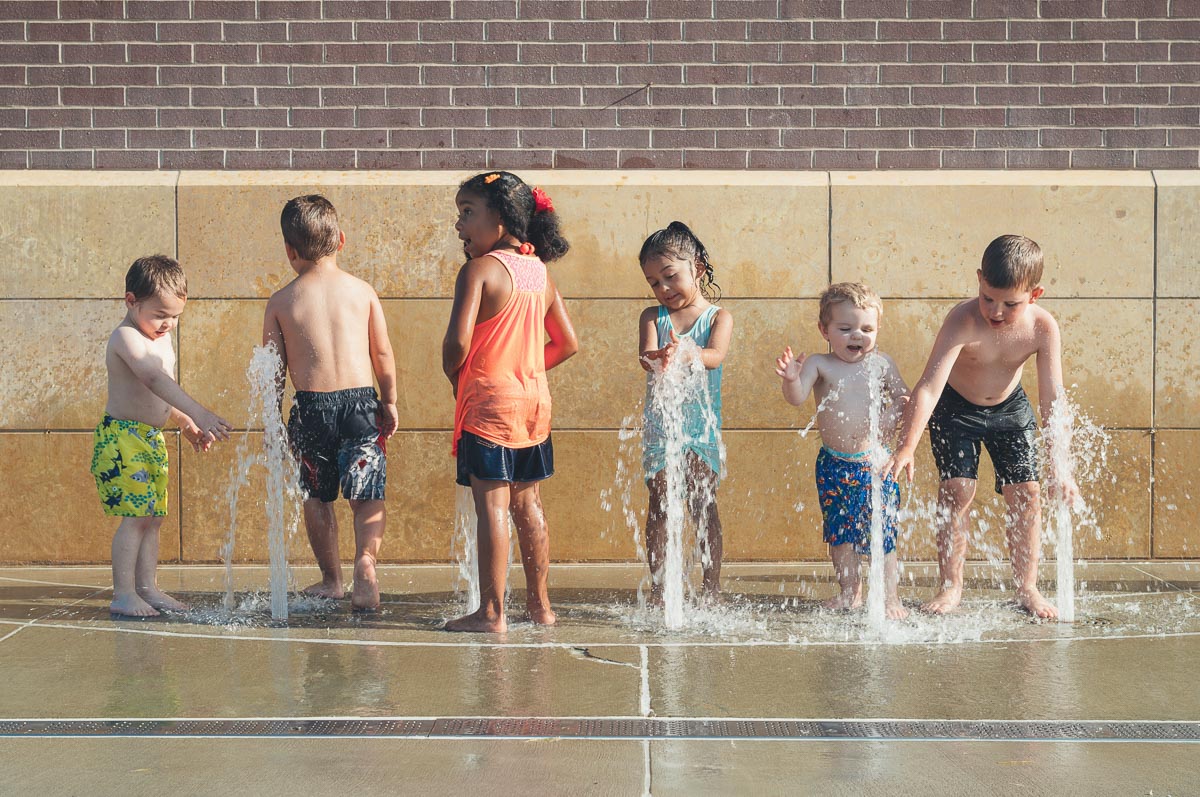“Miles of aggressive concrete, uninhabited by any living green thing... the Houston freeway landscape was an urban crust that resembled the ugly discolored tissue of a bad scar across clean skin.” That's how landscape architect Kevin Shanley described the Houston of 40 years ago.
The Houston of today looks remarkably different as more parks and green spaces are funded and built throughout the Bayou City and there are more to come.
Houston's Park and Recreation Department is partially responsible for some of these parks, but the department isn't meeting its goal of having a green space within a half-mile or 10-minute walk of all citizens, which is The Trust for Public Land standard for cities aiming to be more park-friendly. The map below shows just how far they have to go before achieving that goal.

Courtesy of Houston's Park and Recreation Department
The map above shows the areas in Houston that have varying degrees of need for a park. The darkest red portions are the neighborhoods where there isn't a park within a half mile or 10-minute walk for residents. These are the areas that HPARD aims to develop green spaces, but the majority of the parks department's focuses goes into park renovations and improvements, according to Michael Isermann, HPARD deputy director of facilities management and development.
"We are constantly on the lookout for tracts of land that could potentially become parks at some point in the future," Isermann said. "We're currently at 48 percent. In our city right now, 48 percent of the population can walk out their door, walk for 10 minutes and be at a neighborhood park." In total, there are 374 parks managed by HPARD throughout Houston.
Of course, the goal of the parks department is to grow the 48 percent to 100 percent. There isn't a specific deadline for that to happen, but the department is actively working on it. "That's the reason why we have been doing a lot of land banking," Isermann said. "We've purchased properties, but we don't develop them. We just leave them as green spaces and don't call them parks, but they're there for when we're ready to develop it and there's enough interest to develop it."
Public interest is another factor Isermann highlighted during his interview. He said new parks are usually created due to an individual or a group of individuals inquiring with the parks department about developing a new park in their neighborhood. He continued saying most park developments are expedited when people go to their city council members first so they can serve as representatives.
The same community involvement strategy could be used for park improvements like new playground equipment, walking trails or dog parks, Isermann said, though caring for your neighborhood's existing park is also critical. "It is important to be a good partner in our city and do your part to keep your park clean," Iserman said.
Once a parcel of land is bought or is ready for park development, the park planners must determine how to fund the park. The department has a variety of options for funding including Tax Increment Reinvestment Zones, private donations managed by Houston Parks Board and a park and open space fund from the city's Code of Ordinances, which is primarily used for buying plots of land, capital improvement and maintenance. This ordinance requires developers to pay $700 for each newly built dwelling unit to HPARD.
An example of how the fee works could be if a homeowner wanted to split their lot and add another house, garage apartment or any other separate dwelling unit on their property. They would have to pay $700 to the department, but they don't have to pay for the home that was already there. Another example is if a developer is building a 200-unit apartment complex, they must pay $700 for each of the 200 apartment units, resulting in a total fee of $140,000 to the parks department.
The money collected from these development fees has to be used in three years after the completion of the construction of the dwelling units. The money also has to go to the park sector that the home is located in. The 21 park sectors throughout Houston can be seen in the map below. There is a clear correlation of where new residential homes and complexes are being built with where the majority of the city's parks are located.
Once enough funding is gathered for creating a new park in a particular sector, the department has to determine justifications for the location of the new park. Through using the ParkScore ParkEvaluator tool from The Trust for Public Land, the department is able to better analyze how much impact a particular park location is going to make on a community compared to another. The department considers factors like how many people will have access to the park within that half-mile or 10-minute walk goal, whether the park is close to a school or public-use space like a library, the quality of the land and the ease of access for current and future residents.
"All that determines whether or not it's a green light or we should look elsewhere," Isermann said. If it's a green light, the parks department moves on to the design phase and eventual construction.
Aside from HPARD, there are dozens of other private or charitable organizations that focus on bringing more parks to the residents of Houston. In March 2018, for example, a future private-public park courtesy of the Downtown Redevelopment Authority, who approved leasing a site for a new public park in the southern area of Houston's downtown, was announced. That park is set to be completed by 2020.
Ultimately, Isermann said, it's about residents going out and being a part of their communities. "We're really trying to make an impact and we really want to make sure that the community gets what they want," he said. "When they are participating in what they want, they actually use it."

